Adaptive Detection of Wave Aberrations Based on the Multichannel Filter
Abstract
1. Introduction
2. Materials and Methods
2.1. Theoretical Foundations
2.2. Scheme for Adaptive Aberration Compensation
- Formation of a pronounced/evident correlation peak in the focal plane of the filter in the DO with indices (p, q).
- Change in the orientation of the PSF intensity distribution in the adjacent DOs of the “level and type” (LT) filter within one row (for odd-symmetry aberrations).
- Presence of the same PSF intensity distributions in the adjacent DOs of the LT-filter within one row (for even-symmetry aberrations).
2.3. Multichannel Filter Employment
2.4. Optical Setup
3. Results
3.1. Detection of One Type of Wave Aberration
3.2. Detection of Superposition of Wave Aberrations (Complex Aberration)
4. Discussion
5. Conclusions
Author Contributions
Funding
Institutional Review Board Statement
Informed Consent Statement
Data Availability Statement
Conflicts of Interest
References
- Camacho, L.; Mico, V.; Zalevsky, Z.; Garcia, J. Quantitative phase microscopy using defocusing by means of a spatial light modulator. Opt. Express 2010, 18, 6755–6766. [Google Scholar] [CrossRef] [PubMed]
- Lombardo, M.; Lombardo, G. Wave aberration of human eyes and new descriptors of image optical quality and visual performance. J. Cataract Refract. Surg. 2010, 36, 313–320. [Google Scholar] [CrossRef] [PubMed]
- Zhao, Q.; Fan, H.; Hu, S.; Zhong, M.; Baida, L. Effect of optical aberration of telescopes to the laser radar. Proc. SPIE 2010, 7656, 76565Z. [Google Scholar]
- González-Núñez, H.; Prieto-Blanco, X.; De la Fuente, R. Pupil aberrations in Offner spectrometers. J. Opt. Soc. Am. A 2011, 29, 442–449. [Google Scholar] [CrossRef] [PubMed]
- Khonina, S.N.; Ustinov, A.V.; Pelevina, E.A. Analysis of wave aberration influence on reducing focal spot size in a high-aperture focusing system. J. Opt. 2011, 13, 095702. [Google Scholar] [CrossRef]
- Booth, M.; Andrade, D.; Burke, D.; Patton, B.; Zurauskas, M. Aberrations and adaptive optics in super-resolution microscopy. Microscopy 2015, 64, 251–261. [Google Scholar] [CrossRef]
- Khorin, P.A.; Khonina, S.N.; Karsakov, A.V.; Branchevskiy, S.L. Analysis of corneal aberration of the human eye. Comput. Opt. 2016, 40, 810–817. [Google Scholar] [CrossRef]
- Wilby, M.J.; Keller, C.U.; Haert, S.; Korkiakoski, V.; Snik, F.; Pietrow, A.G.M. Designing and testing the coronagraphic modal wavefront sensor: A fast non-common path error sensor for high-contrast imaging. Proc. SPIE 2016, 9909, 990921. [Google Scholar]
- Klebanov, I.M.; Karsakov, A.V.; Khonina, S.N.; Davydov, A.N.; Polyakov, K.A. Wavefront aberration compensation of space telescopes with telescope temperature field adjustment. Comput. Opt. 2017, 41, 30–36. [Google Scholar] [CrossRef]
- Rastorguev, A.A.; Kharitonov, S.I.; Kazanskiy, N.L. Modeling of arrangement tolerances for the optical elements in a spaceborne Offner imaging hyperspectrometer. Comput. Opt. 2018, 42, 424–431. [Google Scholar] [CrossRef]
- Martins, A.C.; Vohnsen, B. Measuring ocular aberrations sequentially using a digital micromirror device. Micromachines 2019, 10, 117. [Google Scholar] [CrossRef] [PubMed]
- Baum, O.I.; Omel’chenko, A.I.; Kasianenko, E.M.; Skidanov, R.V.; Kazanskiy, N.L.; Sobol’, E.N.; Bolshunov, A.V.; Avetisov, S.E.; Panchenko, V.Y. Control of laser-beam spatial distribution for correcting the shape and refraction of eye cornea. Quantum Electron. 2020, 50, 87–93. [Google Scholar] [CrossRef]
- Mu, Q.; Cao, Z.; Hu, L.; Li, D.; Xuan, L. Adaptive optics imaging system based on a high-resolution liquid crystal on silicon device. Opt. Express 2006, 14, 8013–8018. [Google Scholar] [CrossRef] [PubMed]
- Ellerbroek, B.L.; Vogel, C.R. Inverse problems in astronomical adaptive optics. Inverse Probl. 2009, 25, 063001. [Google Scholar] [CrossRef]
- Esposito, S.; Riccardi, A.; Pinna, E.; Puglisi, A.; Quirós-Pacheco, F.; Arcidiacono, C.; Xompero, M.; Briguglio, R.; Agapito, G.; Busoni, L.; et al. Large binocular telescope adaptive optics system: New achievements and perspectives in adaptive optics. Proc. SPIE 2011, 8149, 814902. [Google Scholar]
- Lukin, V.P. Adaptive optics in the formation of optical beams and images. Phys. Uspekhi 2014, 57, 556–592. [Google Scholar] [CrossRef]
- Ji, N. Adaptive optical fluorescence microscopy. Nat. Methods 2017, 14, 374–380. [Google Scholar] [CrossRef] [PubMed]
- Bond, C.Z.; Wizinowich, P.; Chun, M.; Mawet, D.; Lilley, S.; Cetre, S.; Jovanovic, N.; Delorme, J.; Wetherell, E.; Jacobson, S.M.; et al. Adaptive optics with an infrared pyramid wavefront sensor. Proc. SPIE 2018, 10703, 107031Z. [Google Scholar] [CrossRef]
- Mahajan, V.N. Zernike circle polynomials and optical aberration of system with circular pupils. Appl. Opt. 1994, 33, 8121–8124. [Google Scholar] [CrossRef] [PubMed]
- Love, G.D. Wavefront correction and production of Zernike modes with a Liquid crystal spatial light modulator. Appl. Opt. 1997, 36, 1517–1525. [Google Scholar] [CrossRef] [PubMed]
- Khonina, S.N.; Kotlyar, V.V.; Soifer, V.A.; Wang, Y.; Zhao, D. Decomposition of a coherent light field using a phase Zernike filter. Proc. SPIE 1998, 3573, 550–553. [Google Scholar]
- Neil, M.A.A.; Booth, M.J.; Wilson, T. New modal wave-front sensor: A theoretical analysis. J. Opt. Soc. Am. A 2000, 17, 1098–1107. [Google Scholar] [CrossRef]
- Booth, M.J. Direct measurement of Zernike aberration modes with a modal wavefront sensor. Proc. SPIE 2003, 5162, 79–90. [Google Scholar]
- Sheppard, C.J.R. Zernike expansion of pupil filters: Optimization of the signal concentration factor. J. Opt. Soc. Am. A 2015, 32, 928–933. [Google Scholar] [CrossRef] [PubMed]
- Porfirev, A.P.; Khonina, S.N. Experimental investigation of multi-order diffractive optical elements matched with two types of Zernike functions. Proc. SPIE 2016, 9807, 98070E. [Google Scholar]
- Wilby, M.J.; Keller, C.U.; Snik, F.; Korkiakoski, V.; Pietrow, A.G.M. The coronagraphic Modal Wavefront Sensor: A hybrid focal-plane sensor for the high-contrast imaging of circumstellar environments. Astron. Astrophys. 2017, 597, A112. [Google Scholar] [CrossRef]
- Khonina, S.N.; Karpeev, S.V.; Porfirev, A.P. Wavefront aberration sensor based on a multichannel diffractive optical element. Sensors 2020, 20, 3850. [Google Scholar] [CrossRef]
- Gerchberg, R.; Saxton, W. Phase determination for image and diffraction plane pictures in the electron microscope. Optik 1971, 34, 275–284. [Google Scholar]
- Fienup, J.R. Reconstruction of an object from the modulus of its Fourier transform. Opt. Lett. 1978, 3, 27–29. [Google Scholar] [CrossRef]
- Elser, V. Phase retrieval by iterated projections. J. Opt. Soc. Am. A 2003, 20, 40–55. [Google Scholar] [CrossRef] [PubMed]
- Marchesini, S.A. Unified evaluation of iterative projection algorithms for phase retrieval. Rev. Sci. Instrum. 2007, 78, 011301. [Google Scholar] [CrossRef] [PubMed]
- Cheng, Z.; Meiqin, W.; Qianwen, C.; Dong, W.; Sui, W. Two-step phase retrieval algorithm using single-intensity measurement. Int. J. Opt. 2018, 2018, 8643819. [Google Scholar] [CrossRef]
- Tokovinin, A.; Heathcote, S. DONUT: Measuring optical aberrations from a single extrafocal image. Publ. Astron. Soc. Pac. 2006, 118, 1165–1175. [Google Scholar] [CrossRef][Green Version]
- Guo, H.; Korablinova, N.; Ren, Q.; Bille, J. Wavefront reconstruction with artificial neural networks. Opt. Express 2006, 14, 6456–6462. [Google Scholar] [CrossRef] [PubMed]
- Paine, S.W.; Fienup, J.R. Machine learning for improved image-based wavefront sensing. Opt. Lett. 2018, 43, 1235–1238. [Google Scholar] [CrossRef] [PubMed]
- Rivenson, Y.; Zhang, Y.; Günaydın, H.; Teng, D.; Ozcan, A. Phase recovery and holographic image reconstruction using deep learning in neural networks. Light Sci. Appl. 2018, 7, 17141. [Google Scholar] [CrossRef]
- Nishizaki, Y.; Valdivia, M.; Horisaki, R.; Kitaguchi, K.; Saito, M.; Tanida, J.; Vera, E. Deep learning wavefront sensing. Opt. Express 2019, 27, 240–251. [Google Scholar] [CrossRef]
- Rodin, I.A.; Khonina, S.N.; Serafimovich, P.G.; Popov, S.B. Recognition of wavefront aberrations types corresponding to single Zernike functions from the pattern of the point spread function in the focal plane using neural networks. Comput. Opt. 2020, 44, 923–930. [Google Scholar] [CrossRef]
- Khorin, P.A.; Dzyuba, A.P.; Serafimovich, P.G.; Khonina, S.N. Neural networks application to determine the types and magnitude of aberrations from the pattern of the point spread function out of the focal plane. J. Phys. Conf. Ser. 2021, 2086, 012148. [Google Scholar] [CrossRef]
- Khorin, P.A. Analysis wavefront propagating in free space based on the Zernike polynomials and Gauss-Laguerre modes expansion. J. Phys. Conf. Ser. 2019, 1096, 012104. [Google Scholar] [CrossRef]
- Kirilenko, M.S.; Khorin, P.A.; Porfirev, A.P. A wavefront analysis based on Zernike polynomials. CEUR Workshop Proc. 2016, 1638, 66–75. [Google Scholar]
- Khorin, P.A.; Degtyarev, S.A. Wavefront aberration analysis with a multi-order diffractive optical element. CEUR Workshop Proc. 2017, 1900, 28–33. [Google Scholar]
- Khorin, P.A.; Volotovskiy, S.G. Analysis of the threshold sensitivity of a wavefront aberration sensor based on a multi-channel diffraction optical element. Proc. SPIE 2021, 11793, 117930B. [Google Scholar]
- Khorin, P.A.; Podlipnov, V.V.; Khonina, S.N. Generation of scalable wavefront for testing optical systems. Proc. SPIE 2020, 11516, 115161K. [Google Scholar]
- Born, M.; Wolf, E. Principles of Optics: Electromagnetic Theory of Propagation, Interference and Diffraction of Light, 7th ed.; Cambridge University Press: Cambridge, UK, 1999. [Google Scholar]
- Weaver, C.S.; Goodman, J.W. A technique for optically convolving two functions. Appl. Opt. 1966, 5, 1248–1249. [Google Scholar] [CrossRef] [PubMed]
- Horner, J.L.; Gianino, P.D. Phase-only matched filtering. Appl. Opt. 1984, 23, 812–816. [Google Scholar] [CrossRef]
- Millán, M.S. Advanced optical correlation and digital methods for pattern matching—50th anniversary of Vander Lugt matched filter. J. Opt. 2012, 14, 103001. [Google Scholar] [CrossRef]
- Khonina, S.N.; Karpeev, S.V.; Paranin, V.D. A technique for simultaneous detection of individual vortex states of Laguerre-Gaussian beams transmitted through an aqueous suspension of microparticles. Opt. Lasers Eng. 2018, 105, 68–74. [Google Scholar] [CrossRef]
- Khonina, S.N.; Karpeev, S.V.; Butt, M.A. Spatial-light-modulator-based multichannel data transmission by vortex beams of various orders. Sensors 2021, 21, 2988. [Google Scholar] [CrossRef] [PubMed]
- Khorin, P.A.; Volotovskiy, S.G.; Khonina, S.N. Optical detection of values of separate aberrations using a multi-channel filter matched with phase Zernike functions. Comput. Opt. 2021, 45, 525–533. [Google Scholar] [CrossRef]
- Khorin, P.A. Iterative algorithm for wavefront correction based on optical decomposition in wave aberrations. In Proceedings of the 2021 International Conference on Information Technology and Nanotechnology (ITNT), Samara, Russia, 20–24 September 2021; pp. 1–6. [Google Scholar]
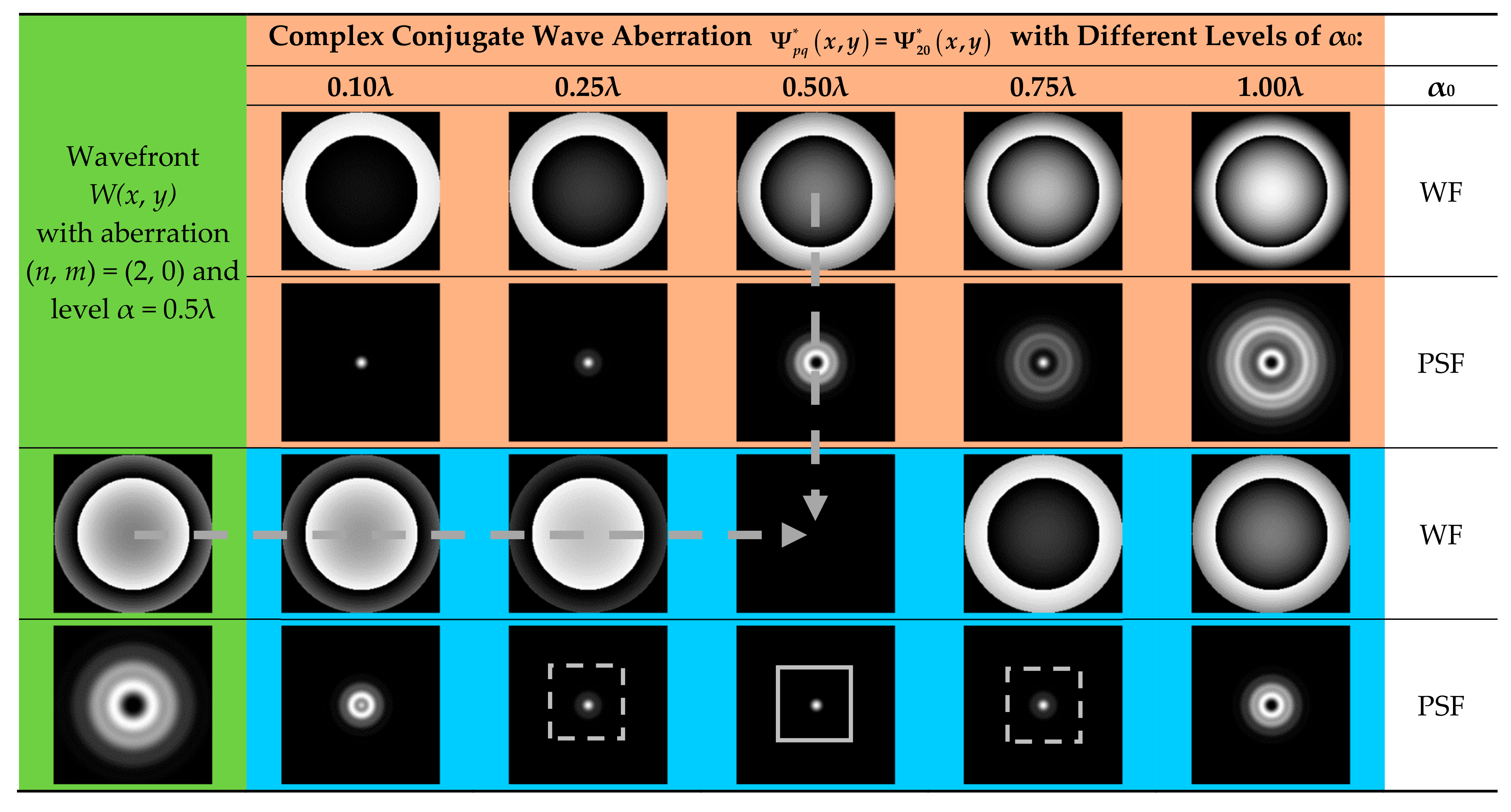
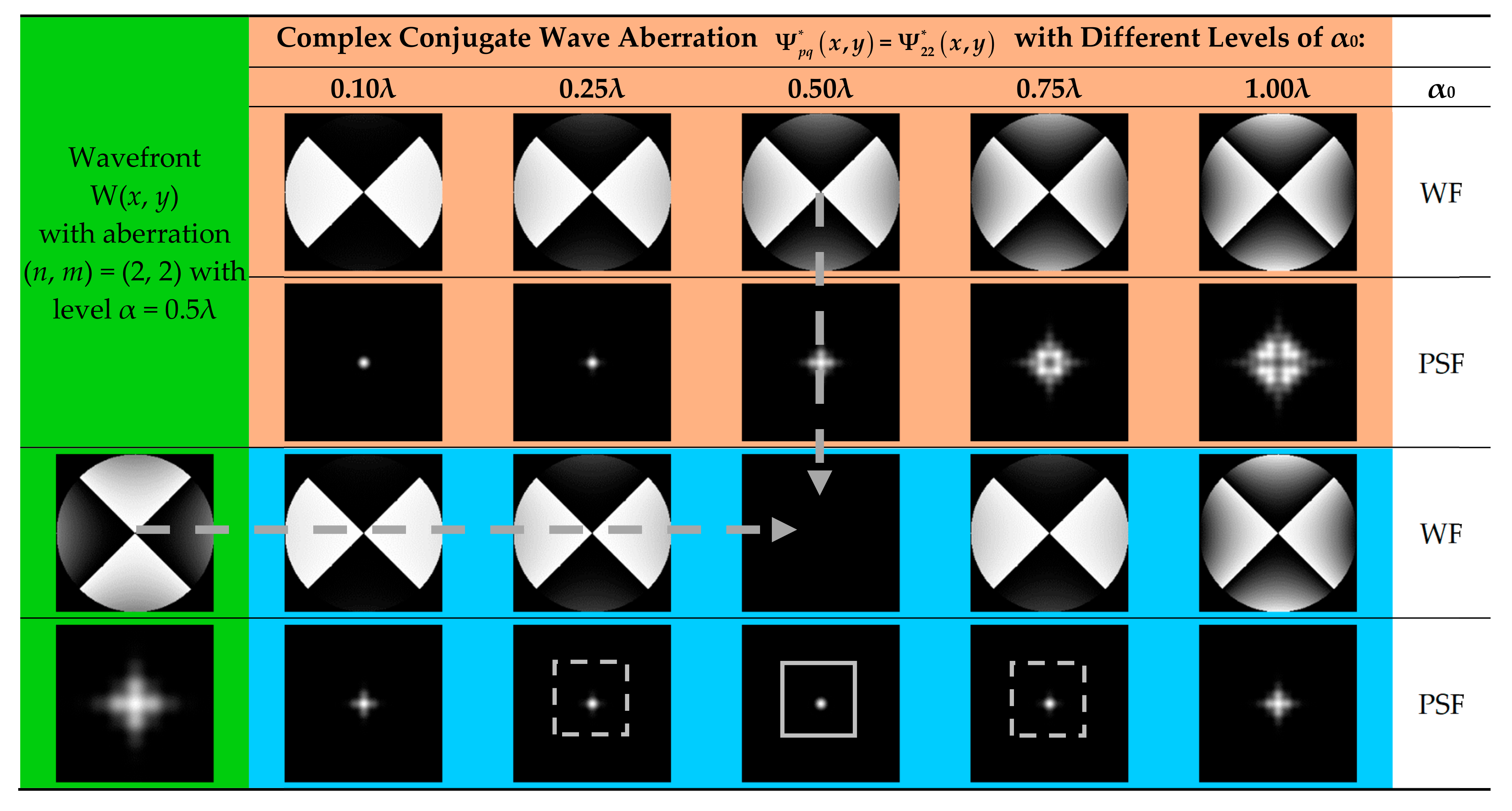




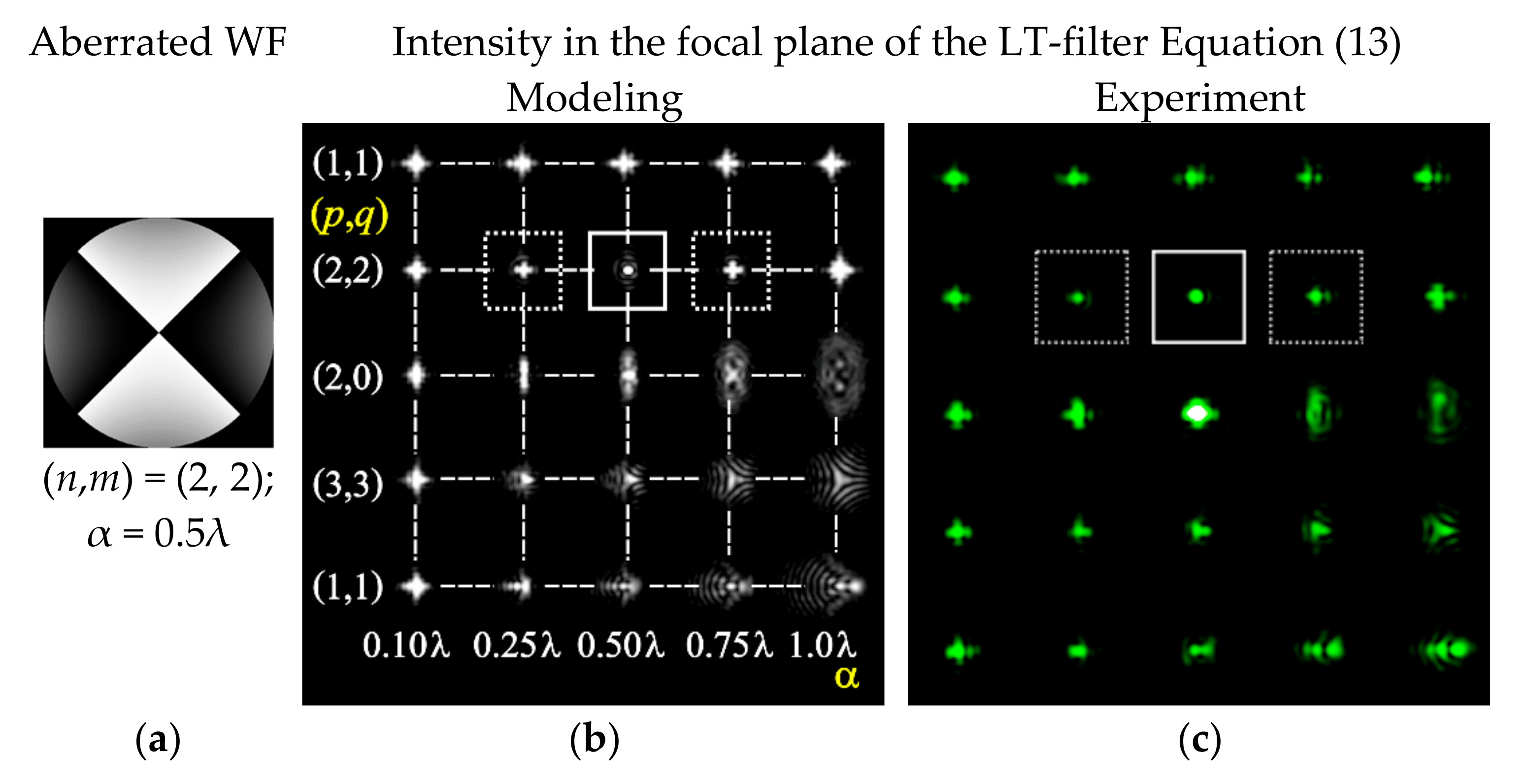

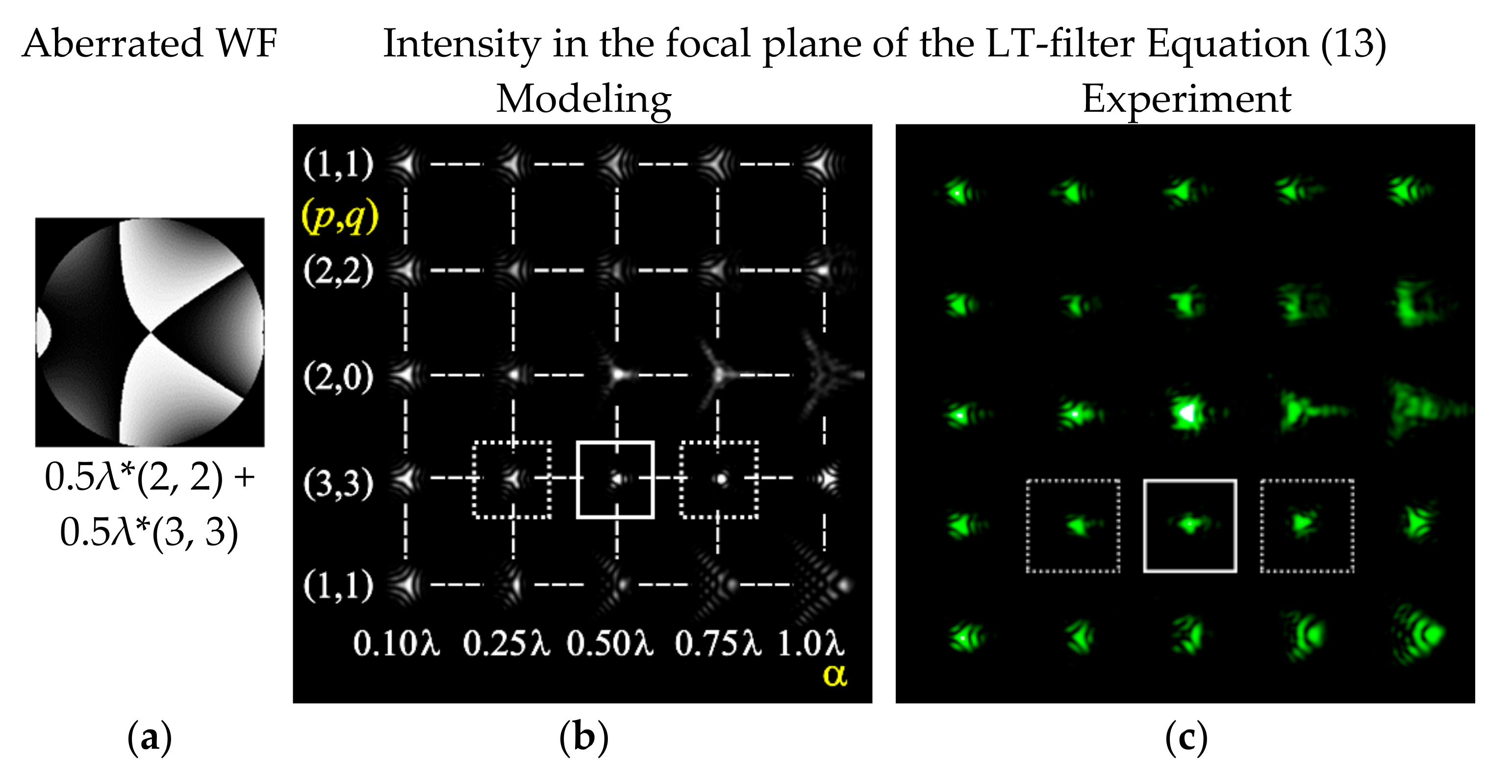
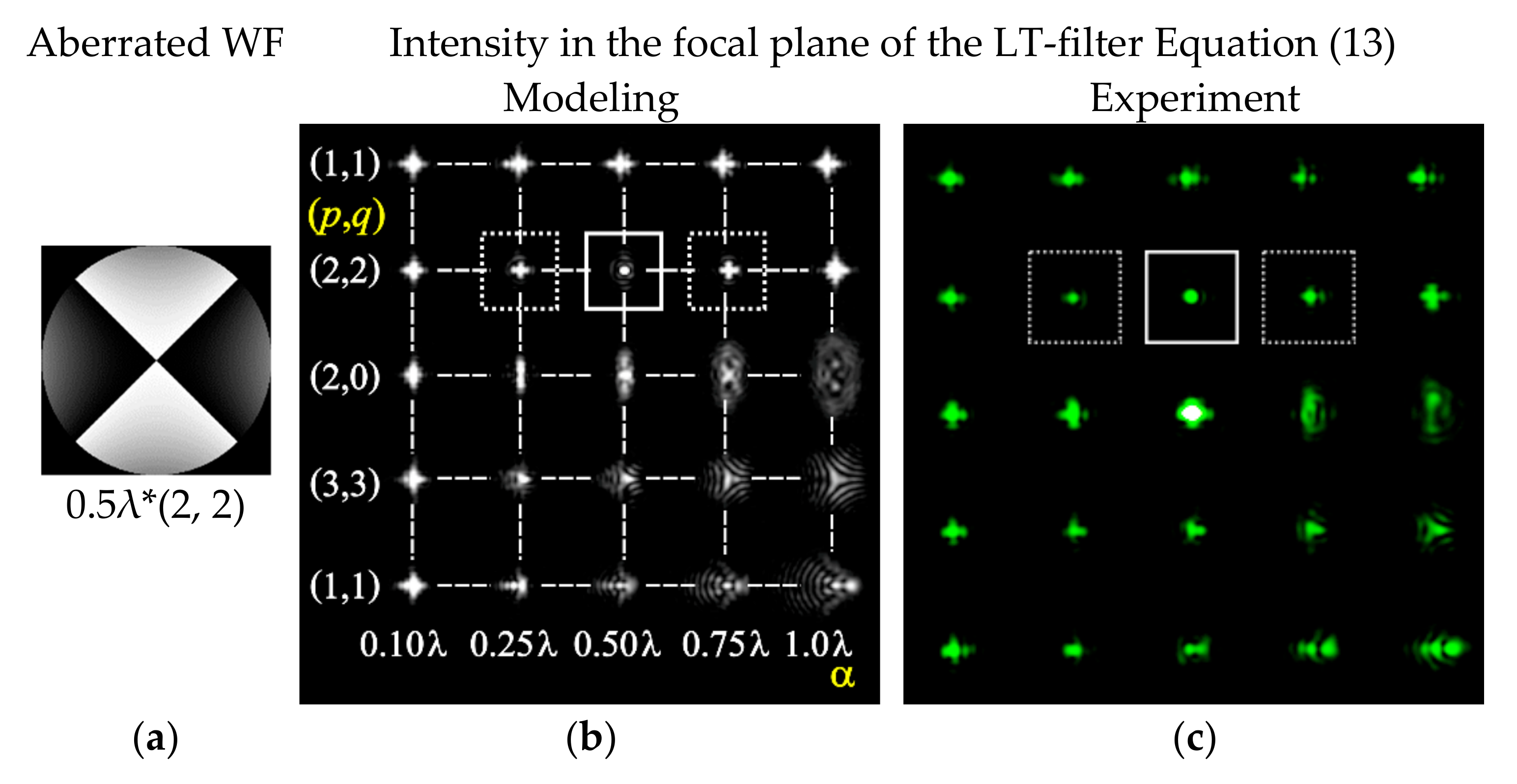


| (n, m) | (0, 0) | (1, 1) | (2, 2) | (2, 0) | (3, 3) | (3, 1) | (4, 4) | (4, 2) | (4, 0) |
|---|---|---|---|---|---|---|---|---|---|
| Aberrationtype | Ideal | Tilt | Astigmatism | Defocus | Coma (Trefoil) | Pure coma | Quadrofoil | 2nd order astigmatism | Spherical |
| Aberration Type | α | 0.10λ | 0.25λ | 0.50λ | 0.75λ | 1.00λ |
|---|---|---|---|---|---|---|
| Defocus (n, m) = (2, 0) | WF phase |  |  |  |  |  |
| PSF |  |  |  |  |  | |
| Spherical (n, m) = (4, 0) | WF phase |  |  |  |  |  |
| PSF |  |  |  | 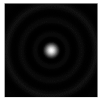 | 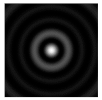 |
| Aberration Type | α | 0.10λ | 0.25λ | 0.50λ | 0.75λ | 1.00λ |
|---|---|---|---|---|---|---|
| Astigmatism (n, m) = (2, 2) | WF phase |  |  |  |  |  |
| PSF |  |  |  |  |  | |
| Quadrofoil (n, m) = (4, 4) | WF phase |  |  |  |  |  |
| PSF |  |  |  |  | 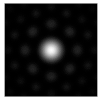 |
| Aberration Type | α | 0.10λ | 0.25λ | 0.50λ | 0.75λ | 1.00λ |
|---|---|---|---|---|---|---|
| Pure coma (n, m) = (3, 1) | WF phase |  |  |  |  |  |
| PSF |  |  |  | 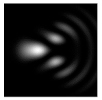 |  | |
| Coma (Trefoil) (n, m) = (3, 3) | WF phase |  |  |  |  |  |
| PSF |  | 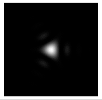 | 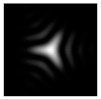 | 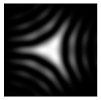 |  |
| WF | Type of the Filter | Intensity in the Focal Plane of the T-Filter Equation (14) | |
|---|---|---|---|
| Modeling | Experiment | ||
 (n, m) = (0, 0); α = 0 | T-filter at α0 = 0.5λ | 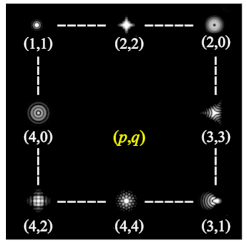 | 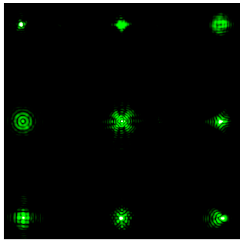 |
 (n, m) = (3, 1); α = 0.5λ | T-filter at α0 = 0.3λ | 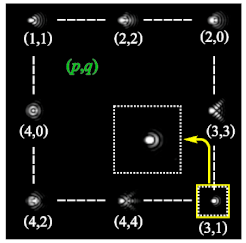 |  |
| T-filter at α0 = 0.5λ |  |  | |
| T-filter at α0 = 0.7λ | 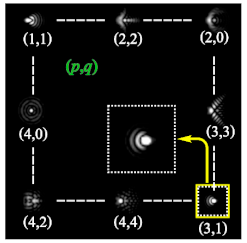 |  | |
| Aberrated WF | Type of the Filter | Intensity in the Focal Plane of the T-Filter Equation (14) | |
|---|---|---|---|
| Modeling | Experiment | ||
 (n, m) = (3, 3); α = 0.5λ | T-filter at α0 = 0.5λ | 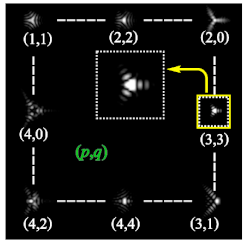 | 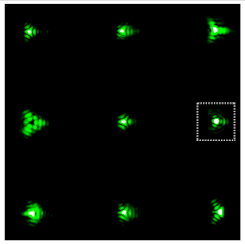 |
| T-filter at α0 = 0.7λ | 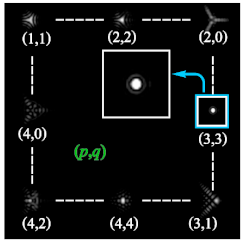 | 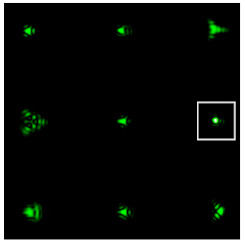 | |
| T-filter at α0 = 0.9λ | 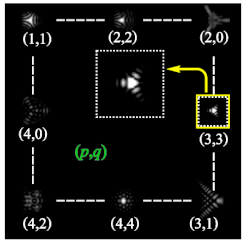 | 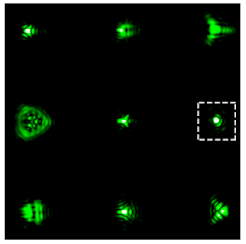 | |
Publisher’s Note: MDPI stays neutral with regard to jurisdictional claims in published maps and institutional affiliations. |
© 2022 by the authors. Licensee MDPI, Basel, Switzerland. This article is an open access article distributed under the terms and conditions of the Creative Commons Attribution (CC BY) license (https://creativecommons.org/licenses/by/4.0/).
Share and Cite
Khorin, P.A.; Porfirev, A.P.; Khonina, S.N. Adaptive Detection of Wave Aberrations Based on the Multichannel Filter. Photonics 2022, 9, 204. https://doi.org/10.3390/photonics9030204
Khorin PA, Porfirev AP, Khonina SN. Adaptive Detection of Wave Aberrations Based on the Multichannel Filter. Photonics. 2022; 9(3):204. https://doi.org/10.3390/photonics9030204
Chicago/Turabian StyleKhorin, Pavel A., Alexey P. Porfirev, and Svetlana N. Khonina. 2022. "Adaptive Detection of Wave Aberrations Based on the Multichannel Filter" Photonics 9, no. 3: 204. https://doi.org/10.3390/photonics9030204
APA StyleKhorin, P. A., Porfirev, A. P., & Khonina, S. N. (2022). Adaptive Detection of Wave Aberrations Based on the Multichannel Filter. Photonics, 9(3), 204. https://doi.org/10.3390/photonics9030204







